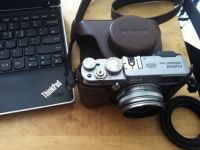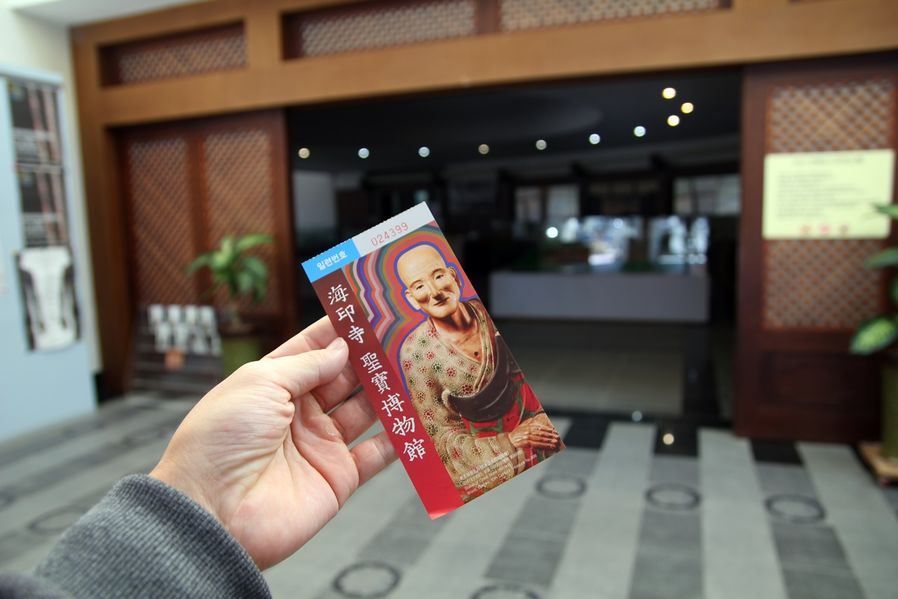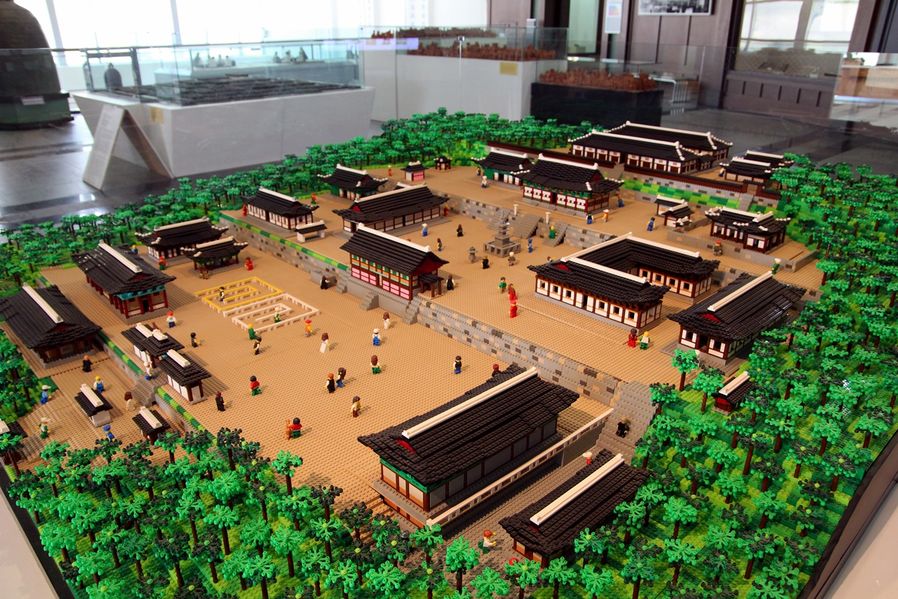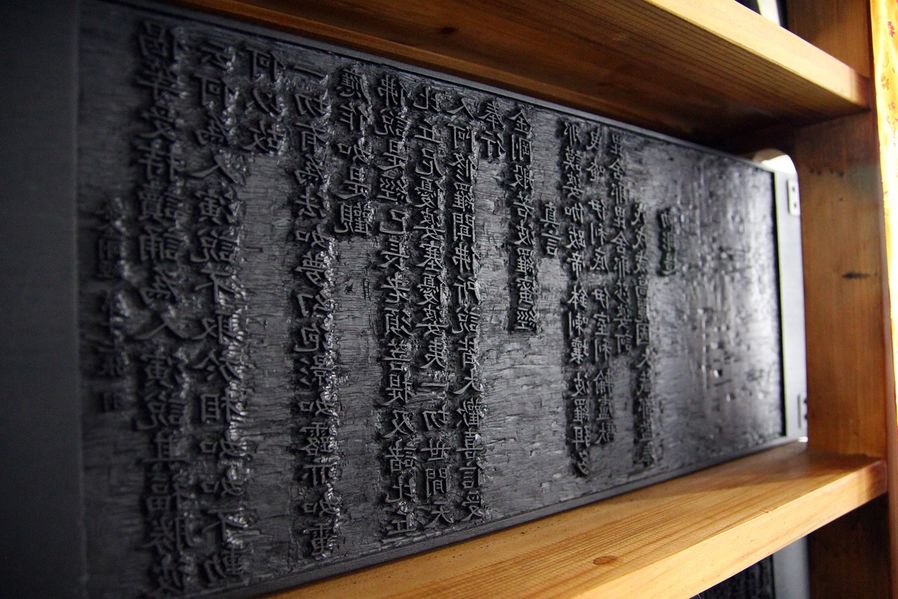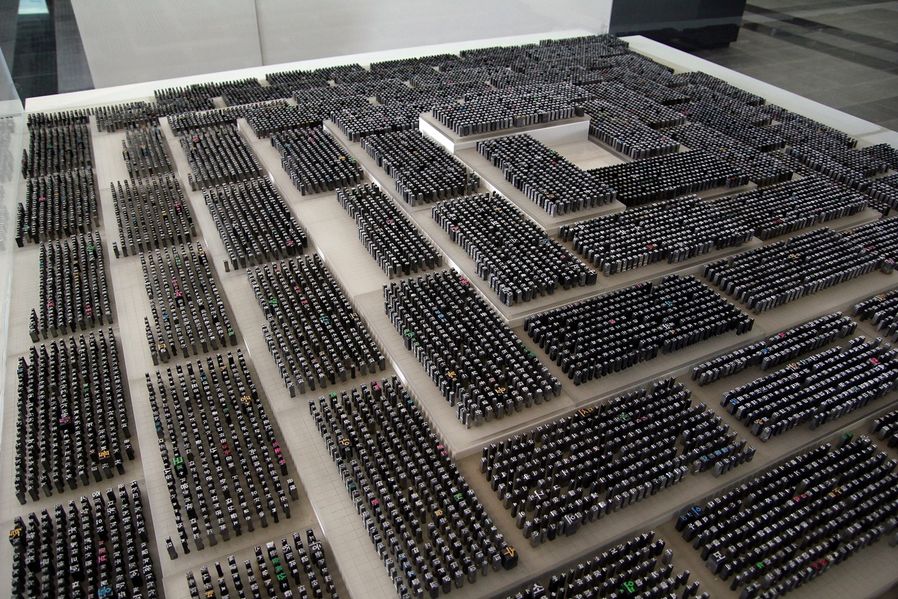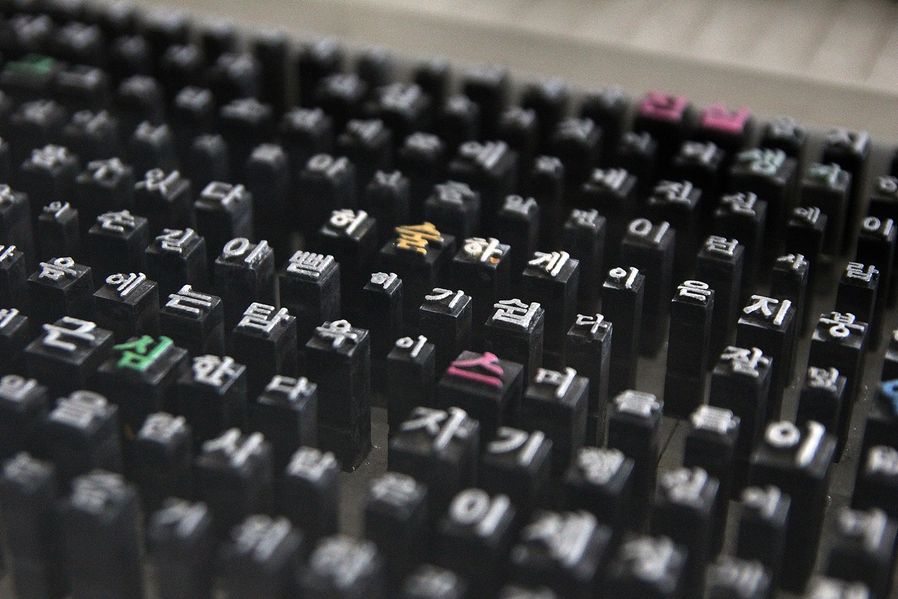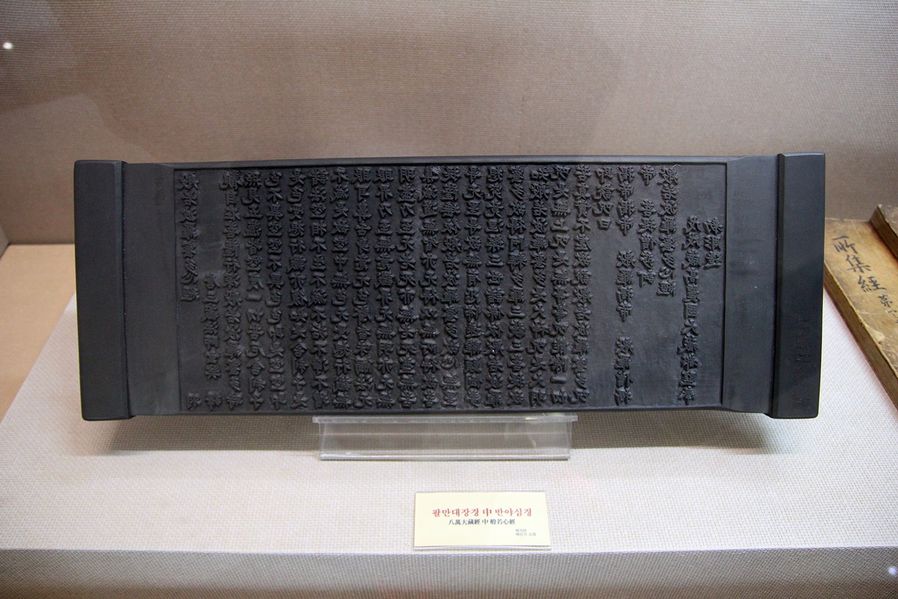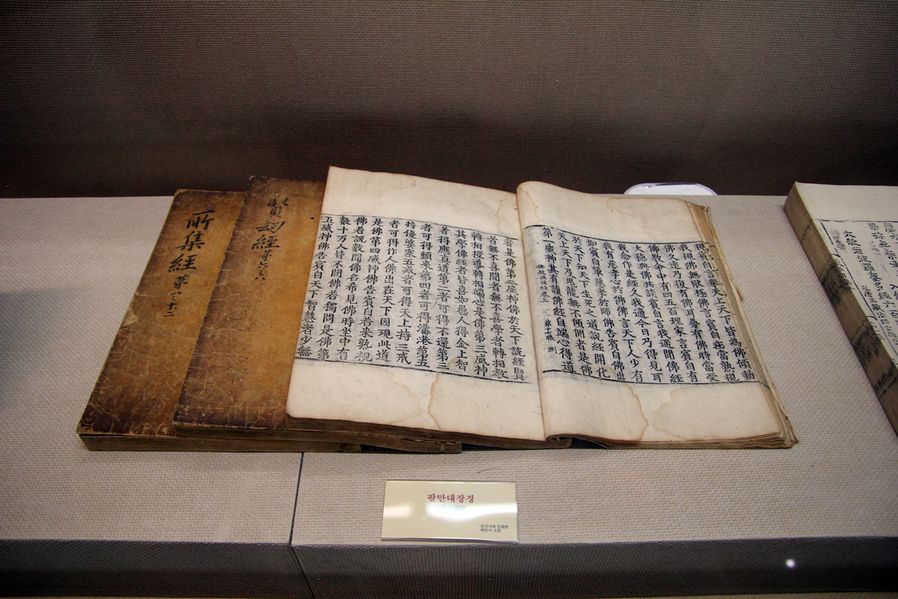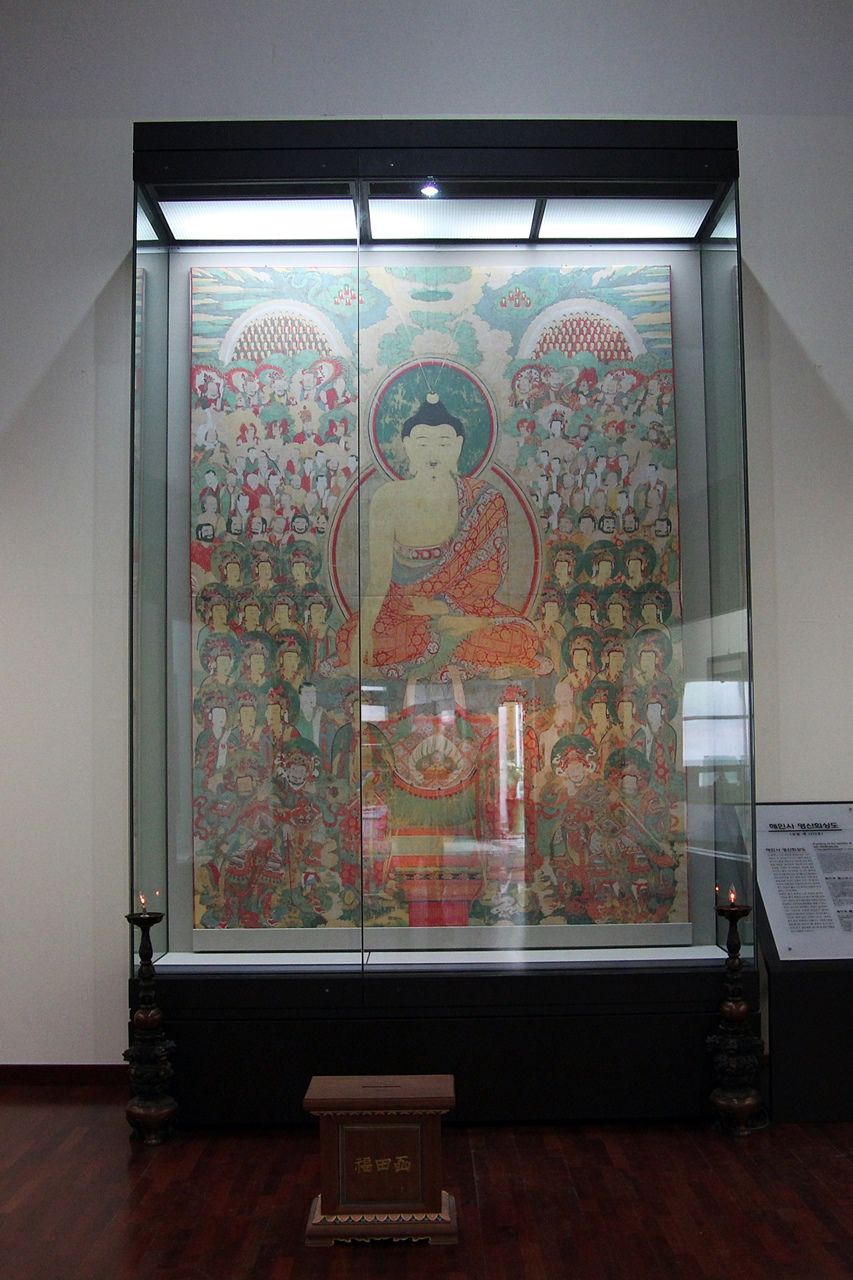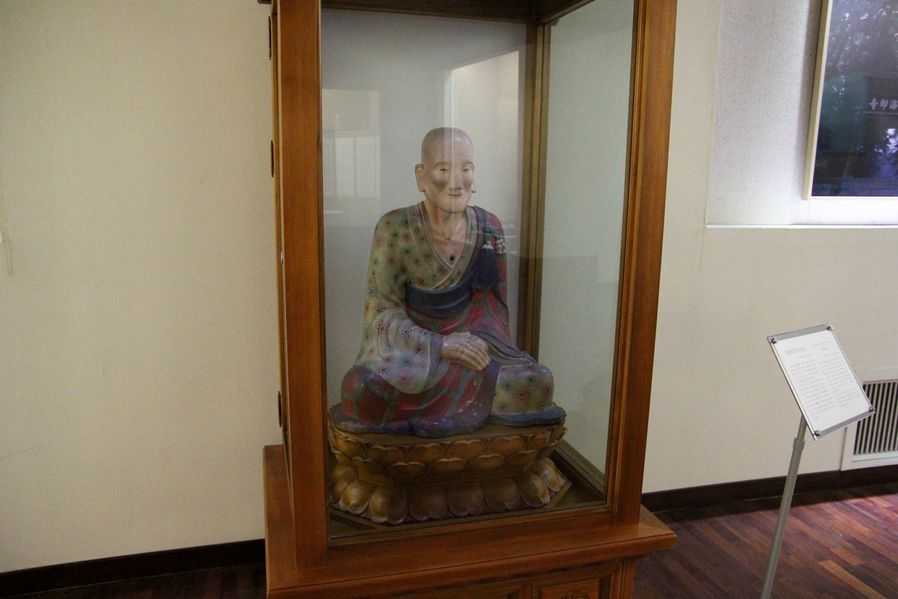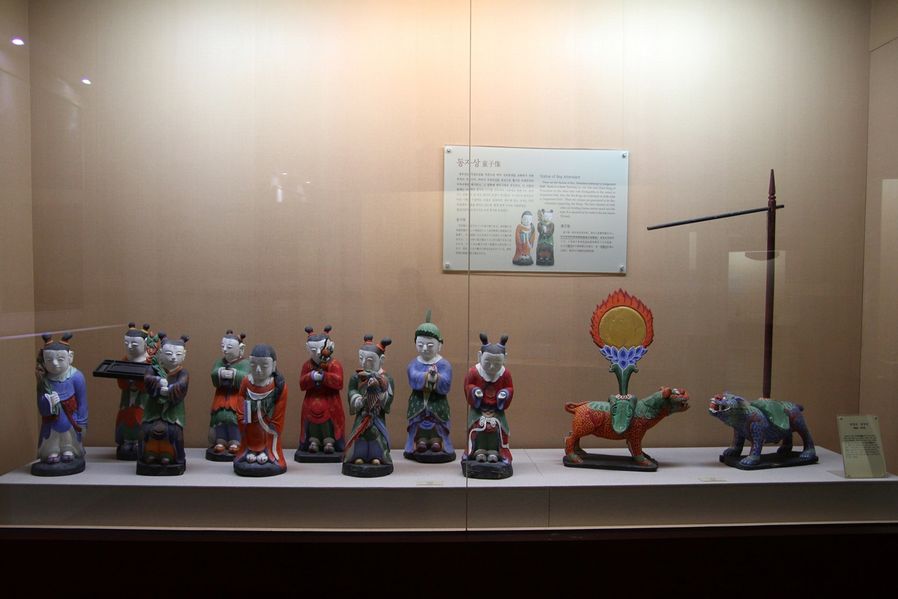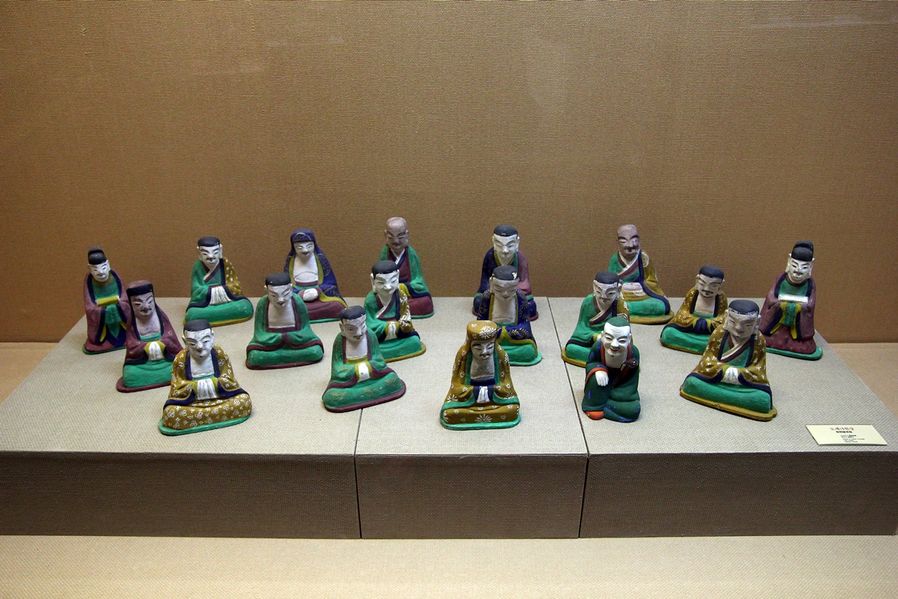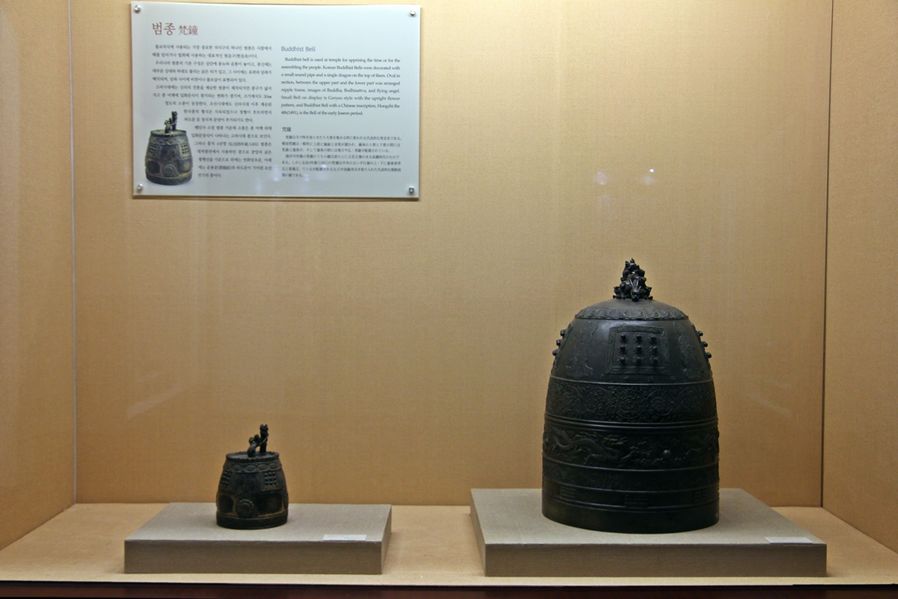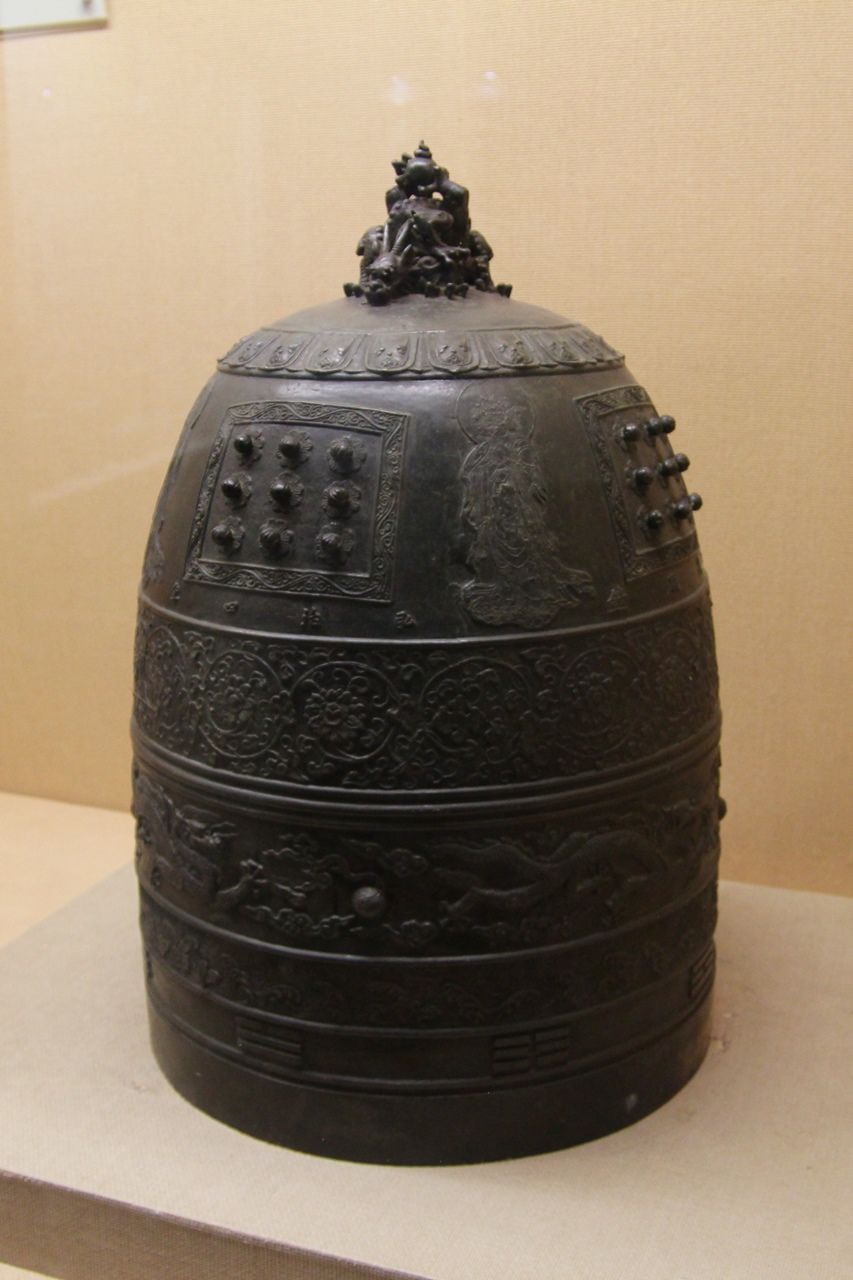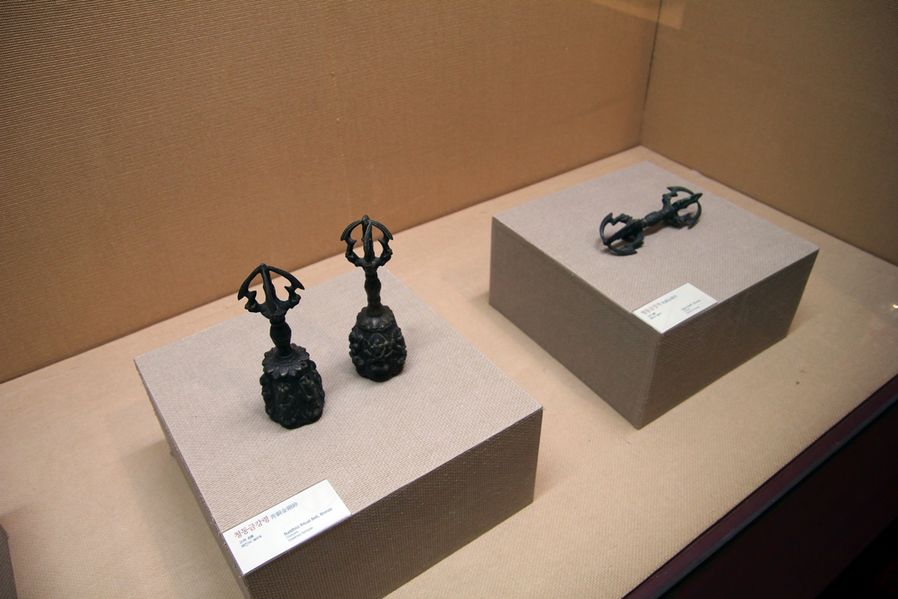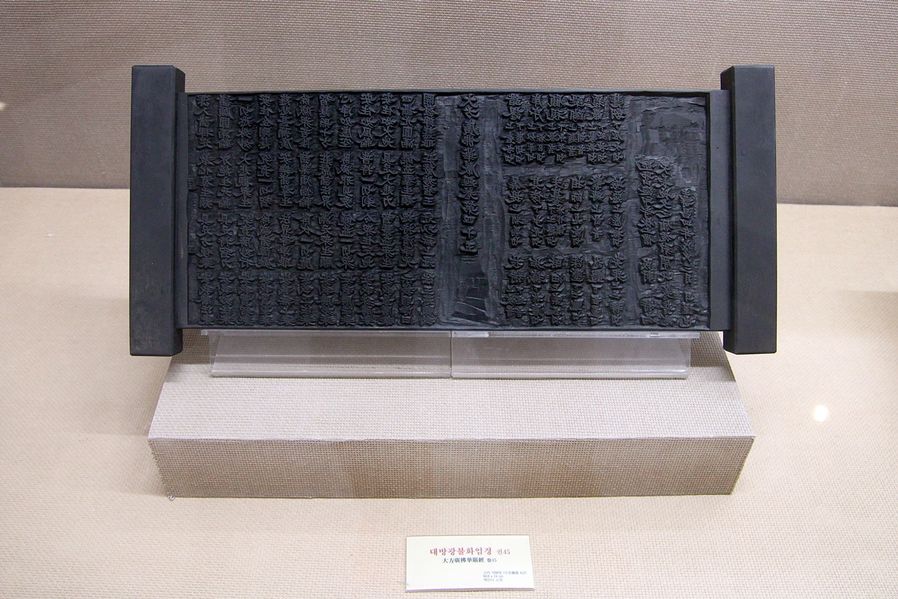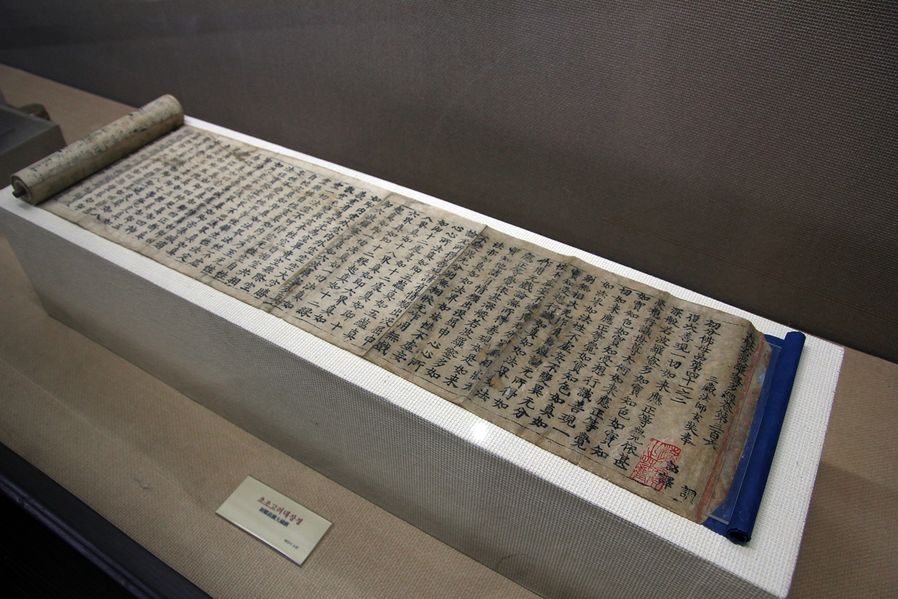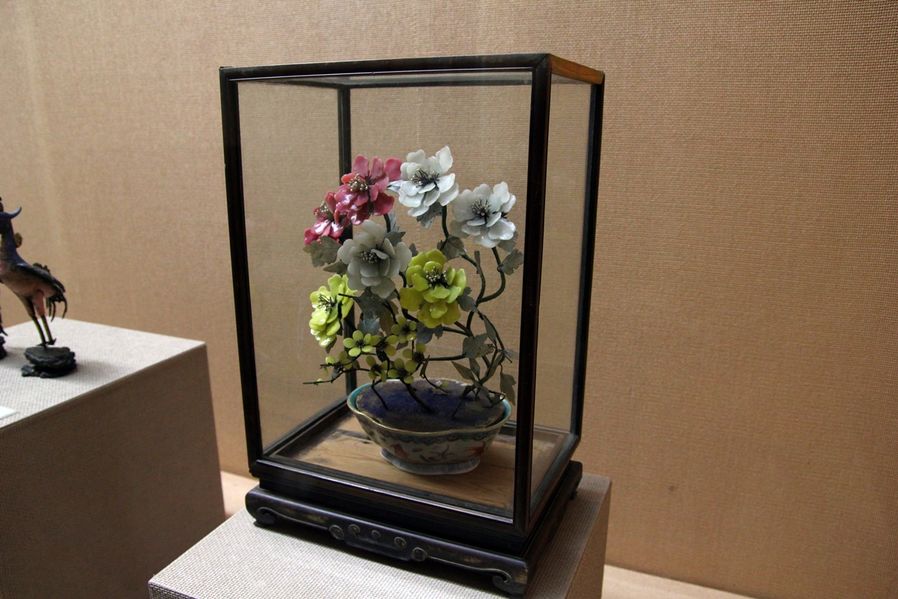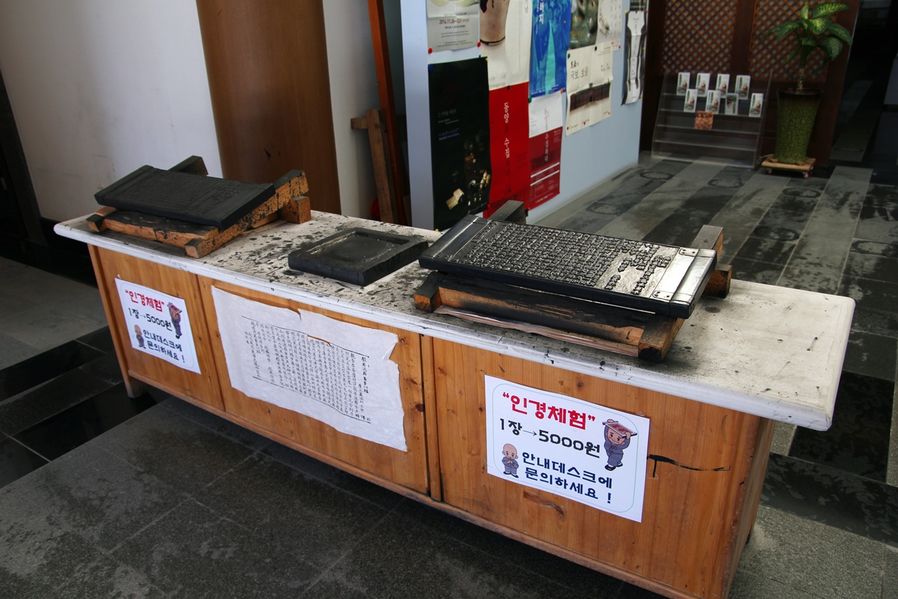-
Start
-
Hwangmae Mountain
-
Theme Park
-
Gagopa Sikdang
-
Jeongyang Wetland
-
Punggyong
-
Sonkalguksu
-
Sorigil
-
Seongbo Museum
-
Haeinsa Temple
-
Gobau Sikdang
-
Finish
Along the Sorigil, we saw Seongbo Museum when there’s 1km left till we get to Haeinsa. Haeinsa is a treasure of Korea that has a long history of Korea and passes down a lot of Buddhist remains including the world heritage, JanggyeongPanjeon, and Memory of the World, the Tripitaka Koreana. However, many of cultural assets were damaged and stolen throughout numerous wars and modern wars so the monks started to build Seongbo Museum sin 1997 in order to safely and efficiently maintain, preserve and study cultural assets. It was open in 2002. We should take a look what kind of cultural assets are displayed. FYI, taking pictures is not allowed here but I got an approval from the administrators in advance.
This is the front view of the museum. Haeinsa is accessible by car so you can drive up to the museum on your way to the temple. If you cannot walk along Sorigil, you can drive up or you can park your car here and walk 1km to the temple. But beautiful trails are all near the ticket office so I suggest you take a walk about 600m from the ticket office to Gilsangam Hermitage and drive up to the museum.
Admission fee is 2,000 won per one person. Heerangjosasang, treasure No.999, was printed on the ticket. The original must be in this temple. I’ll tell you about the story when I see it so let’s get inside first.
As I entered, an interesting display caught my eyes. This is Haeinsa made with lego blocks. I first thought they were familiar and delicate models but as I got closer they were lego blocks. Interesting. ^^*
And there’s a model of the Tripitaka Koreana for us to touch it. You would see how 80 thousand of woodblocks were sophisticatedly and amazingly made when you touch it. Think about engraving complicated Chinese letters reversed on woodblocks with burins. I’m told it takes 30 years for one person to finish reading if he/she reads it 8 hours a day and imagine how long it would take to make them.
In one corner there are lead printing types on which Korean letters are engraved. These letters were ‘words of truth’ written in Korean letters by the Venerable Beopjeong for people to understand, and the Korean types were formed as a tower by No Ju-hwan.
They’re reversed for they are types and I reversed it back to read them. So there you go. It’s Words of Truth indeed. I don’t have a religion but I try to accept every religion and I truly hope people would be happy and live with bright mind based on Buddha’s mercy words.
There’s an interesting artwork in one corner that I wanted to show you. This is made of clay by someone and it consists of 1,000 clay dolls to praise people’s hope while they were moving the Tripitaka Koreana during Haein Art event in 2013. It’s called ‘a thousand dreams’ with their wishes. I hope you make your wishes come true.
This woodblock is Prajina-Paramita. This is a scripture of Prajina Thought(般若思想) among Buddhist scriptures, the most well-read scripture in Korea, and its full name is Prajina-Paramita-Sutra(摩訶般若波羅蜜多心經). It’s designated as National Treasure No.32, and it’s the shortest one consisting of 260 letters. It’s famous that its’ recitated in every Buddhist ritual in Korea.
When the Tripitaka Koreana is printed on woodblock, it becomes a book like this. Not many of them are left now because of too many wars in Korea but I deeply wish that our sons and daughters could have this culture for a long time where there’s no war in this land.
There’s a painting on the wall that is 233 chui x 290 chui (width x height) big. This is called YeongsanHoesangdo(靈山會上圖) sealed in Daeungjeon of this temple, and it’s altar portrait of Buddha drawn in 1729, 5th year of the King Yeongjo in Joseon Dynasty era. With Sakyamuni in the center, there are Buddhist saints lining up above, below, left and right of him. The structure that saints are smaller in the back was amazing.
Wow…this painting is dignified. This is the portrait of the King Sejo, 7th King of Joseon Dynasty, who had a special connection with Haeinsa as he withdrew 50 woodblocks of Tripitaka Koreana and reconstruct JanggyeongPanjeon. This explains why his portrait of him wearing red royal robe and sitting on a chair with tiger’s skin wrapped around is kept in Haeinsa Temple, right?
This Moksimgeonchil(木心乾漆-applying hemp cloth on carved woods and coloring it) Heerangjosasang(希朗祖師像) is the one drawn on the ticket. This is treasure No. 999 now. Heerangjosa(889~956) was a monk of Haeinsa who used to be active since the united Silla to the late Koryo and he was also a master of Hwaeom. He is also a person who flourished Haeinsa after he contributed to the unification of later three kingdoms by Taejo Wang Geon in Koryo Dynasty. This sculpture is highly praised among Moksimgeonchil seated statues remained in Korea. It’s expressed so real that he looks still alive.
The 9 sculptures to the left are young monks assumed to be made in Joseon Dynasty era. In Buddhism, it is normal to leave sculptures of followers. And the two lions on the right are called Eopgyeongdae and Eopchingdae, which represent that when a person stands in front of the king of the underworld after death, he would see you in the mirror(called Eopgyeongdae) to see your good and evil acts in the world. Then Eopchingdae weighs the crimes and determines whether to send you to hell.
This is Sipyuknahansang(Sixteen Arhats Sculptures) made of ceramics. Totally there are 18, including Sixteen Arhat Sculptures and two Pangwansangs. Nahan is called Arahan(阿羅漢), a saint who deserves to be presented an offering by people after renouncing worldly desires and realizing the best. I am so sorry to say this but they look so adorable. ^^*
This is Palsangdo(Eight Great Events) consisting of eight paintings. Palsangdo is a Buddhist painting that consists of eight scenes of Sakyamuni’s life. Normally it is enshrined as a painting hung on the wall of Palsangjeon Hall but this one uniquely made of 8 folding screens. Although Palsangdo describes major scenes as it is small, it looks complete as an artistic piece.
You cannot miss bells when you talk about Buddhism. The Buddhist temple bels are necessary tools in Buddhist rituals and especially, the big bronze bell on the right is designated as treasure No. 1253. I sometimes go to temple with my parents and I cannot tell you how beautiful this bronze bell sounds in a temple in the early morning. Just the sound of it makes it all solemn.
If you take a closer look at the upper part, it says Hongchi 4th Year in Chinese letters. This means 22nd Year of the King Seongjong in the Joseon Dynasty. So it was made in that year, and as you can see, there’s a realistic and dynamic dragon and a lotus on the shoulder part. You can also see the images of bodhisattva between square patterns and this bell as a whole is very glamorous as it has so many patterns.
This thing that looks just like a magic tool in a fantasy movie is called Geumgangryeong(Bronze Vajra Bell) and Geumgangjeo(Vajra). They’re tools used in Buddhist rituals. The left one is a ritual tool that is used to reform the people by making sounds in Buddhist rituals and it has Vajra on the top of the bell. The right one, Vajra, is also used in Buddhist rituals and the legend says that it has a mysterious power that beat the King of the Asuras when Sakra-Devanam Indra fought against him. Believe it or not, it’s upto you. ^^*
There’s another national treasure here as well. This is Daebanggwang Bulhwaeom Gyeong(Avatamsaka Sutra;大方廣弗華嚴經), National Treasure No. 206-16. This woodblock is one of Avatamsaka Sutra enshrined in JanggyeongPanjeon of Haeinsa. Daebanggwang Bulhwaeom Gyeong is called Hwaeom Gyeong in short, one of 728 Buddhist scriptures. Avatamsaka Sutra is one of three greatest Buddhist scriptures in Korea along with Diamond Sutra and the Lotus Sutra that Buddha and all creatures are one, not two. To the rightmost, that is at the end of woodlock, it says Suchangsanyeon(壽昌四年) meaning that it’s engraved in the fourth year of the King Sukjong(in 1098) of Koryo Dynasty era, the oldest one among the Tripitaka Koreana kept in Haeinsa Temple.
This says First Tripitaka Koreana(初雕高麗大藏經). It literally means it is the first Tripitaka Koreana. It was made to defeat the Kitan with the power of Buddha in 1011 during the King Hyeonjong of Koryo Dyasty. But while it was kept in Buinsa Temple in Daegu, it was burnt by Mongolia in the 13th centry but 1,715 of them still remained in Namseonsa Temple in Kyoto, Japan.
Wow, this is Okhwa(玉花) made of jade. Okhwa is an object that represents grandeur that used to be served to the Buddha and it’s a flower made of jade on ceramics in three colors. The flower leaves and stamen were delicated expressed. I can’t say for sure but some say it’s an article left by the Reverend Samyeong, a monk in the middle of the Joseon Dynasty.
When we got to the exit of the museum, there’s a corner you can make sutras printing by yourself. You’d have to pay 5,000 won though, quite expensive. But it would be fun to try with your kids. Sutras printing(印經) is a process of printing Buddha’s teachings written on woodblocks on the paper and making it a book.
Address : 10, Chiin-ri, Gaya-myeon, Hapcheon-gun, Gyeongsangnam-do (경상남도 합천군 가야면 치인리 10)
Telephone : 055-934-3150~3151
Admission Fees : Adult: 2,000 won, Student: 1,000 won (Under 6: free)
Opening Hours : Mar. – Oct. 10:00-18:00, Nov. – Feb. 10:00 – 17:00 (By 18:00 on Sat., Sun., National Holidays)
Closing Days : Every Tuesday, Jan. 1 every year









